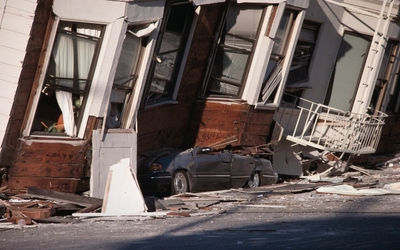Could We be at Risk of Devastating Earthquakes?
Much research has been undertaken in recent years as to the impact of human activity on the planet, with earthquakes being the latest topic. Research gathered from a recent U.S Geological Survey (USGS) has reported that the increasing occurrence of earthquakes in the United States could be leaving an enlarging industrial footprint. In unusual locations across the U.S, earthquakes are occurring more and more, leaving a trail of devastation in its path.
These tremors could be linked to the surge in industrial activity over recent years, in particular in the fields of gas and oil processes. The earthquakes reported tend to have been noted in western America, such as in California where movements along the Pacific and North American Plates regularly occur. However, experts say that increasingly there are earthquakes sprouting in the eastern parts of the country where industrial activities could be induced by human activity. Man-made earthquakes are triggered by pressure changes because of procedures such as impounding reservoirs and injecting fluids into the ground. There are already naturally developed stresses in the Earth’s crust, and if that pressure rises because of a fault near its breaking point then the result may well be an earthquake. The majority of these tremors are caused by waste-water injection and hydraulic fracturing. The former poses a bigger risk.
Hydraulic fracturing involves injecting high-pressure liquid below the surface of the Earth to create fractures where we can then extract natural gases. This process naturally induces micro-earthquakes, but they are so minor that they pose no threat to the public. More than 10,000 wells have been subjected to fracking in states such as Oklahoma, Ohio and Pennsylvania. The largest induced earthquake measured 3.6 on the scale, which was too small to be of any risk. However, waste-water injection is done at lower pressures so that water can be stored permanently underground. Because of the large volumes of water being injected and the considerable depth, these pose a large stress on the environment. One of the largest induced earthquakes caused by this process measured 5.6 in Oklahoma, destroying 14 homes and injuring two people.
There are factors which increase the likelihood of an earthquake, which include the magnitude of the stress or disturbance, the frequency and its geographic reach. New developments in seismology in recent years have looked at where and when these earthquakes occur, as well as hopefully identifying ways that they can be managed more effectively. One of the methods thought to be a possibility is what is known in the industry as ‘traffic light’ systems. These involve setting a guideline that can restrict or suspend the injection activity based on earthquake monitoring to see if there are naturally occurring tremors happening alongside the activity.
Other factors being examined are ways to dispose of the water without injecting it, and reducing the volume of water being injected. Other solutions involve recycling the fluid for other applications, such as the development of shale gas or oil recovery in the production of petroleum. If researchers could understand better what the stresses in the earth were then they could do a better job of predicting what the risks are to injecting under the surface. With earthquakes becoming more common across the U.S, these activities require further investigation so as less damage can be caused to the planet, as well as to people living in higher-risk areas. Experts claim that they are manageable risks, which they hope will be reduced with a better knowledge on the subject.


Comments are closed.